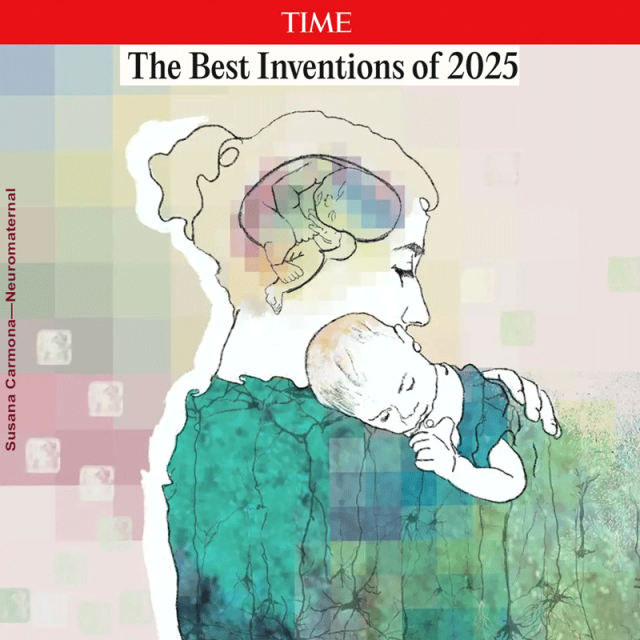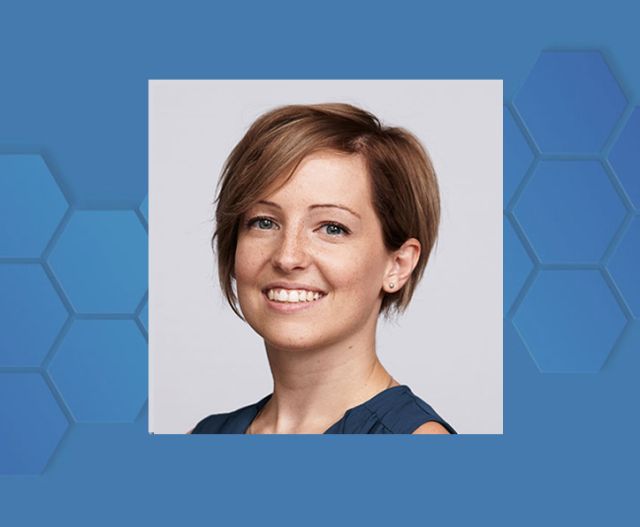Miolane: “HerBrain” a TIME Magazine 2025 Top Invention
ECE Assistant Prof. Nina Miolane’s research project on “An AI Model of the Maternal Brain” among TIME magazine’s “Best Inventions of 2025”

You might have read in the recent Robert Mehrabian College of Engineering News article that ECE’s Nina Miolane received a $1 million grant from the Chan Zuckerberg Initiative (CZI) to pursue a project titled “An AI Model of the Maternal Brain.” In that work, Miolane seeks to provide new and much-needed insights into how a woman’s brain changes during pregnancy and motherhood and how such changes might shed light on postpartum depression and other issues.
Now the project has been named one of TIME magazine’s “Best Inventions of 2025.”
Until recently, notes Miolane, who was buoyed by the coverage in TIME, “There hasn’t been much research on women’s brains, and there aren’t enough women researchers in neuroscience and AI, so it’s significant that we are able to do this project — and receive some recognition for it.”
The project is a collaboration that also involves UCSB postdoctoral researchers Sarah Kushner and Magdalena Martinez Garcia; research engineer Luis Pereira; fifth-year PhD student Adele Myers; fourth-year PhD student Louisa Cornelis; Emily Jacobs, a professor in the UCSB Department of Psychological & Brain Sciences and director of UCSB’s Ann S. Bowers Women’s Brain Health Initiative (WBHI); and European partners NeuroMaternal specializing in maternal brain health. The team uses advanced AI techniques to model changes in the human brain during and after pregnancy as part of an ambitious effort that could eventually reshape how science understands maternal well-being.
“The integration of AI into brain imaging is reshaping neuroscience, and the WBHI’s AI Core — guided by Nina’s expertise — is playing a pivotal role in that evolution,” Jacobs says. “And these innovations are happening right here at UCSB.”

Miolane directs the AI Core component of the Initiative and is now helping to launch a broader campus-wide effort known as REAL AI (Reliable, Efficient, and Aligned AI). “We want to develop the kind of AI that can actually move science forward,” she explains. “It has to be reliable so that it works; efficient so that it learns from small data sets; and aligned so that it reflects human values and goals.”
The last element — aligned — is critical. “Our research and the technology we develop are all intended to serve women's health,” Miolane says, “and alignment is kind of a key word in the AI community. It points to research aimed at designing systems that stay truthful and safe, and that genuinely support human needs.”
For now, Miolane and her collaborators are focused on their first proof of concept of an AI mobile app that models how the maternal brain adapts before, during, and after pregnancy — a kind of digital twin of the maternal brain. That app is intended, eventually, to complement popular pregnancy trackers by centering the mother’s health. “Most apps tell you what’s happening with the baby — for instance, ‘your fetus is the size of an avocado’ — but they rarely tell you what’s happening to the mother,” Miolane notes. “We want to bring the mom back into the picture, starting with her brain.”
The HerBrain app, expected to launch in 2027 and to be incorporated into other pregnancy apps later on, was built with machine learning and is being trained on brain-imaging data from pregnant people, including Miolane, who had a son last year. The prototype app illustrates how brain structures change across the pregnancy and postpartum periods, so a woman can predict her weekly shifts. Says Miolane: "We want this to be an educational tool.”
TIME magazine “The Best Inventions of 2025” — “HerBrain: A breakthrough in pregnancy information”
Robert Mehrabian College of Engineering News articles: